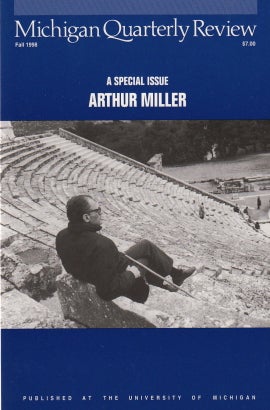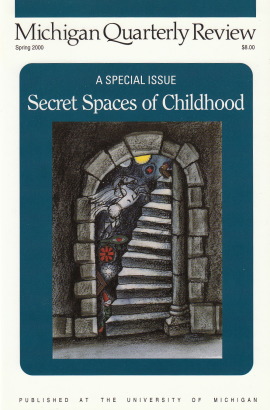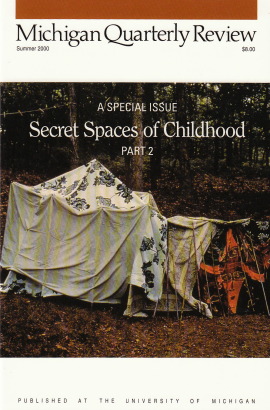A Special Issue: Arthur Miller

This special issue pays tribute to a University of Michigan alumnus. In advance of the 50th anniversary (in February of 1999) of his most famous play, Death of a Salesman, this 300+ page issue illuminates Miller’s life and work from a variety of perspectives. Some highlights include:
Nonfiction: Twenty eminent playwrights, including Edward Albee, Horton Foote, John Guare, Adrienne Kennedy, Tony Kushner, Joyce Carol Oates, Neil Simon, and Lanford Wilson, provide commentary on the impact of Death of a Salesman on their lives. Mostly autobiographical, these brief essays contain abundant insights into the reasons why this play has towered over the modern American theater for a half-century.
An interview with Arthur Miller, and the transcription of a question-and-answer session with him conducted at the University of Evansville in April, tell us much not only about Salesman but about the imaginative world Miller inhabits as he translates reality into art.
Essays by three of the world’s principal experts on Miller’s work deepen our understanding of his plays: Christopher Bigsby surveys the themes of Miller’s writing up to his new work of this year, Mr. Peters’ Connections, for which Bigsby provides the most searching analysis to date; Brenda Murphy in “Willy Loman: Icon of Business Culture” describes how Willy Loman continues to haunt the business community; Gerald Weales in “Arthur Miller and the 1950s” traces the way that Miller’s political and cultural critique in plays like The Crucible and An Enemy of the People was shaped by the anti-Communist crusade and other cultural forces in the decade following his composition of Salesman.
Among the other non-fiction, John Barth’s Hopwood Lecture of 1998 answers the questions most frequently put to a writer, and some that aren’t. (Miller’s career began at the University of Michigan when he won two Hopwood Awards for creative writing in the 1930s); Laurence Goldstein considers Miller’s fiction at essay-length, from his novel of 1945, Focus, about anti-Semitism in America, to his short stories in later decades and the novel he made of his screenplay, The Misfits; book reviews by Michael Szalay (on critiques of commerce and on cultural studies), Richard Tillinghast (on two poets who grew up in Ann Arbor and won Hopwood Awards, Anne Stevenson and Nancy Willard), and Robert H. Vorlicky (on the modern American theater).
Drama: Three theatrical pieces also grace the issue: Arthur Miller’s new comic one-act, “Mr. Ryan’s Interview,” in which a centenarian looks back on life in his rural region; two tyro sketches by Anton Chekhov before he went on to write his masterpieces for the stage; and two scenes from a play about slavery, Harriet Tubman, and John Brown by Robert Hayden, written when he was an undergraduate at the University of Michigan, where he acted in one of Arthur Miller’s own undergraduate plays.
Fiction: Linda Bamber (a revisionary sequel to The Tempest) and playwright Nina Kossman ( a dramatic conversation). Poetry on topics pertinent to the issue by Michael Blumenthal, Jennifer Compton, Philip C. Kolin, David Lehman, Eugenio Montale, Nicolette Nicola, Larissa Szporluk, Baron Wormser, and Jody Zorgdrager.
Graphics: Inge Morath, a distinguished photographer and wife of Arthur Miller, contributes a portfolio of sixteen photographs, most of them unpublished, about Miller’s life and art, as well as a preface stating her own aesthetic as an artist.



